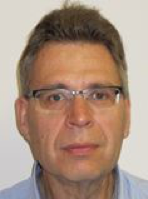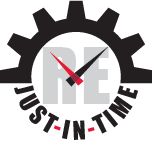Jari Partanen, Bittium, Finland: Towards Continuous Deployment in the Embedded Software Domain and B2B context
Abstract Fundamentals for Agile were created in 2001 focusing on individuals and interactions over process and tools based on earlier, already 1960s developed iterative and incremental development (IID) phenomena. Objective was to develop working software over comprehensive documentation. Continuous Integration (CI) has been merging in developer workspaces already in late 1990s looking for development with a shared mainline several times a day. It was first proposed as part of extreme programming (XP). Continuous Development (CD) targets to develop software to a high standard and easily packaged and deployed to test environments. As a result the ability to rapidly, repeatable and reliably push out enhancements and bug fixes to customers.
The perceived challenges for Continuous Deployment are in embedded environment and context of HW/SW systems extensive in Business-to-Business domain. The keynote focuses to present the case how Bittium has been developing the Lean and Agile Way of Working (WoW) to be able to adapt the models for CD. To be able to introduce faster pace of development several experiments have been executed. These experiments include such as finding common company level models for CI, experimenting and deploying the model across the product and solutions areas, developing the Way of Working from developer point of view by introducing Developer CI and introducing models of DevOps to just name a few. As example for the DevOps a success story is shared. Examples of customer benefits were daily build through time improvement by 80% and Commit pass through rate decreased from one hour to 15 minutes. In addition an example for the development of transparency to visualize product/project metrics from practical point of view for some 100 developers is shared. These highlight also how the requirements from the functional and non-functional point of view have been managed in a context of more than 10 teams working for the same scope.
As an industrial case the results from the improvement of customer satisfaction, employee survey, with improved productivity like Lead Time Development and supporting tool portfolios will be presented. Summarizing the current and future challenges the approach of Q-Rapids project and benefits for a company are shared to highlight the potentials for the development of the non-functional requirements management and case-specific challenges from the perspective of Bittium.
Short bio

Jari Partanen obtained his MSc degree in 1990 in Industrial Management at Process Engineering Department from the University of Oulu, Finland. Currently he is the Head of Quality and Environment at Bittium. Bittium has as a company gone through during last years change towards more Lean and Agile Way of Working and taken into use approaches like Continuous Integration towards Continuous Deployment, Continuous and transparent Planning as well as approaches like embedded DevOps practices. The results have been showing major improvements in the customer perceived quality, lead time over the time and also amongst the personnel reflecting the cultural changes of the company.
Jari Partanen has been active researcher with over 10 peer-reviewed publications. Research interests include topics like continuous planning methods, real-time value delivery meth- ods, innovation exploitation methods as well as mass customi- zation techniques. Recently he has been acting as the Work Package industrial leader in Finnish DIMECC/TEKES Need for Speed program and since November 2016 as Exploitation and Innovation Manager in the H2020 Q-Rapids project.

